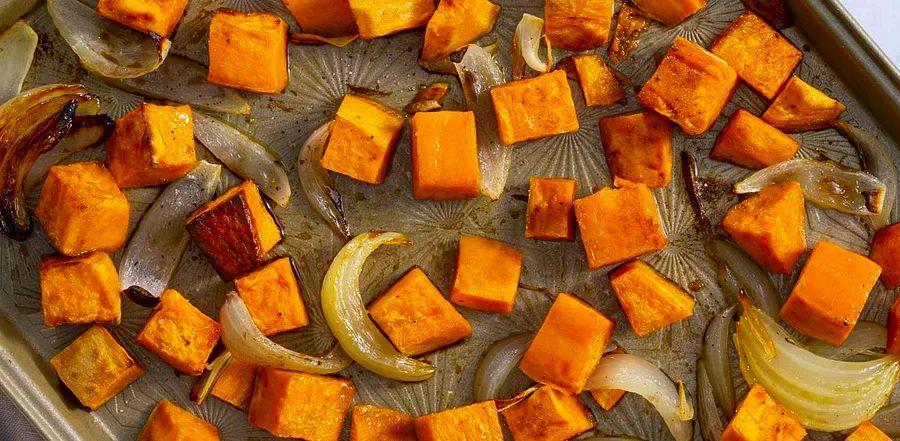5 Must-Know Roasting Tips for Every Home Cook

Roasting is one of the simplest cooking methods. Your oven handles most of the work, allowing you to enjoy quality time with loved ones or unwind with a good book—perfect for the hectic holiday season. The prep work is where you put in your effort: simply season the meat, truss the poultry, chop the veggies, and let the oven work its magic, transforming them into beautifully browned, flavor-packed dishes.
Roasting means cooking food uncovered in the oven using dry heat, unlike techniques like braising, steaming, or stewing which use moisture. The hot air circulating in the oven cooks food evenly from all sides. Depending on what you’re making, you can adjust the temperature to low, medium, or high.
Roasting is perfect for larger cuts of meat such as whole turkeys, hams, and pork tenderloins. Smaller cuts, like boneless chicken breasts or fish, tend to dry out (they’re better suited for pan-searing). Roasting also excels with hearty vegetables like potatoes, beets, and squash, intensifying their natural sweetness and flavor. Master these five key techniques to roast like a pro.
1. Preheat Your Oven to the Correct Temperature.
Adjust the Oven Temperature Based on What You're Roasting
For large roasts, stick to low (250°F) to moderate (375°F) heat to ensure they cook evenly and gently without burning. High heat can scorch the outside before the inside is fully done. For smaller, more delicate cuts like tenderloins, go with high heat (above 400°F) to quickly develop a flavorful crust while ensuring the meat cooks through in no time.
2. Invest in the Right Roasting Equipment.
A solid, heavy-duty roasting pan with a rack is a kitchen essential. The low sides of the pan allow the heat to circulate freely around the food. Choose a sturdy, thick pan to ensure even heat distribution and avoid burning drippings. The rack lifts the food out of excess liquid, which is ideal for roasts or poultry that produce a lot of juices. In a pinch, a wire cooling rack will do, or you can use a broiler pan, though be cautious of spills with its shallow design.
To keep poultry and large roasts in perfect shape during cooking, you’ll need butcher’s twine. Look for food-safe twine at specialty cookware shops, large supermarkets, or hardware stores. If you're in a hurry, simply ask your butcher for a bit of twine when you purchase your meat.
A meat thermometer is crucial to avoid overcooking your roast. Opt for either an instant-read or a remote digital thermometer for precise results.
3. Basting Isn't Always Necessary.
Whether or not to baste depends on the roast. For example, a standing rib roast should not be basted since the flavorful salty crust that forms during roasting is one of its highlights, and basting would wash it away. Whole chickens and turkeys have enough fat under the skin that they essentially self-baste as the fat melts and coats the meat.
Opening the oven to baste frequently lets heat escape, potentially extending cook times or affecting the browning of the meat. Basting isn’t required to keep food moist, but if you want to infuse a glaze or add extra flavor—like with our Tangy Honey-Glazed Ham—then basting can be a good choice.
4. Let Your Meat Rest Before Slicing.
Allow all meat to rest for 10 to 20 minutes after removing it from the oven. Larger cuts, like a standing rib roast, will continue cooking from retained internal heat, often rising by another 10 degrees. Smaller cuts, such as pork tenderloin, don’t have enough mass to increase in temperature by more than a couple of degrees.
The primary reason for letting meat rest is to let the juices redistribute. If you slice into a roast immediately after pulling it from the oven, the juices will run out, leaving the meat dry. Giving it time to rest ensures the juices stay locked in.
5. Stick to Safe Cooking Temperatures.
We follow the U.S. Department of Agriculture’s guidelines for poultry, cooking it to an internal temperature of 165°F. For pork and reheating fully cooked ham, aim for 145°F. For some cuts of beef, lamb, and game, we prefer cooking to lower temperatures for juicier results. However, if you're pregnant, elderly, immunocompromised, or serving children, it's safer to follow the USDA's recommendation to cook beef or lamb to at least 145°F, and game to 160°F.

1

2

3

4

5
Evaluation :
5/5